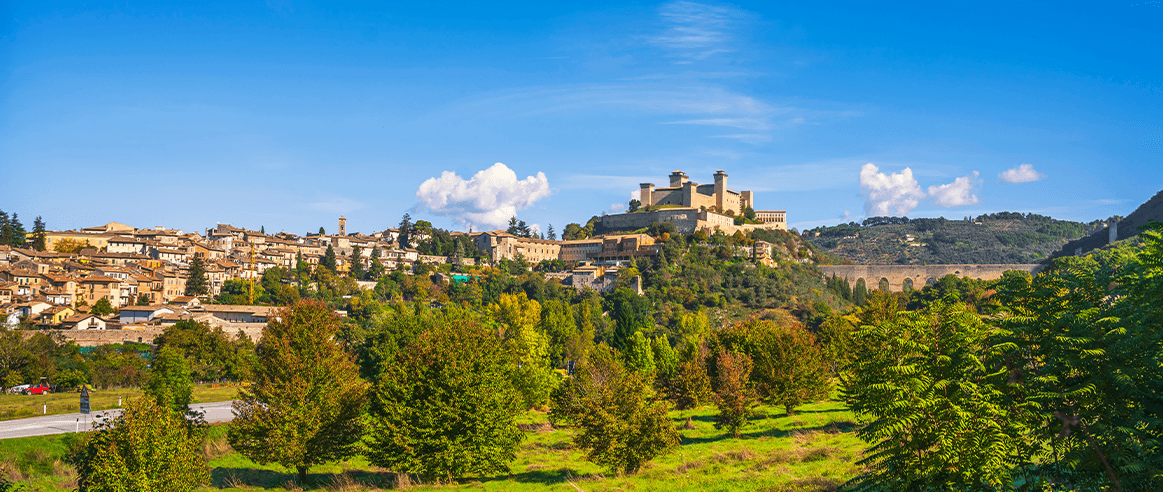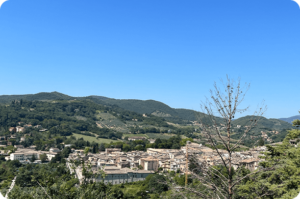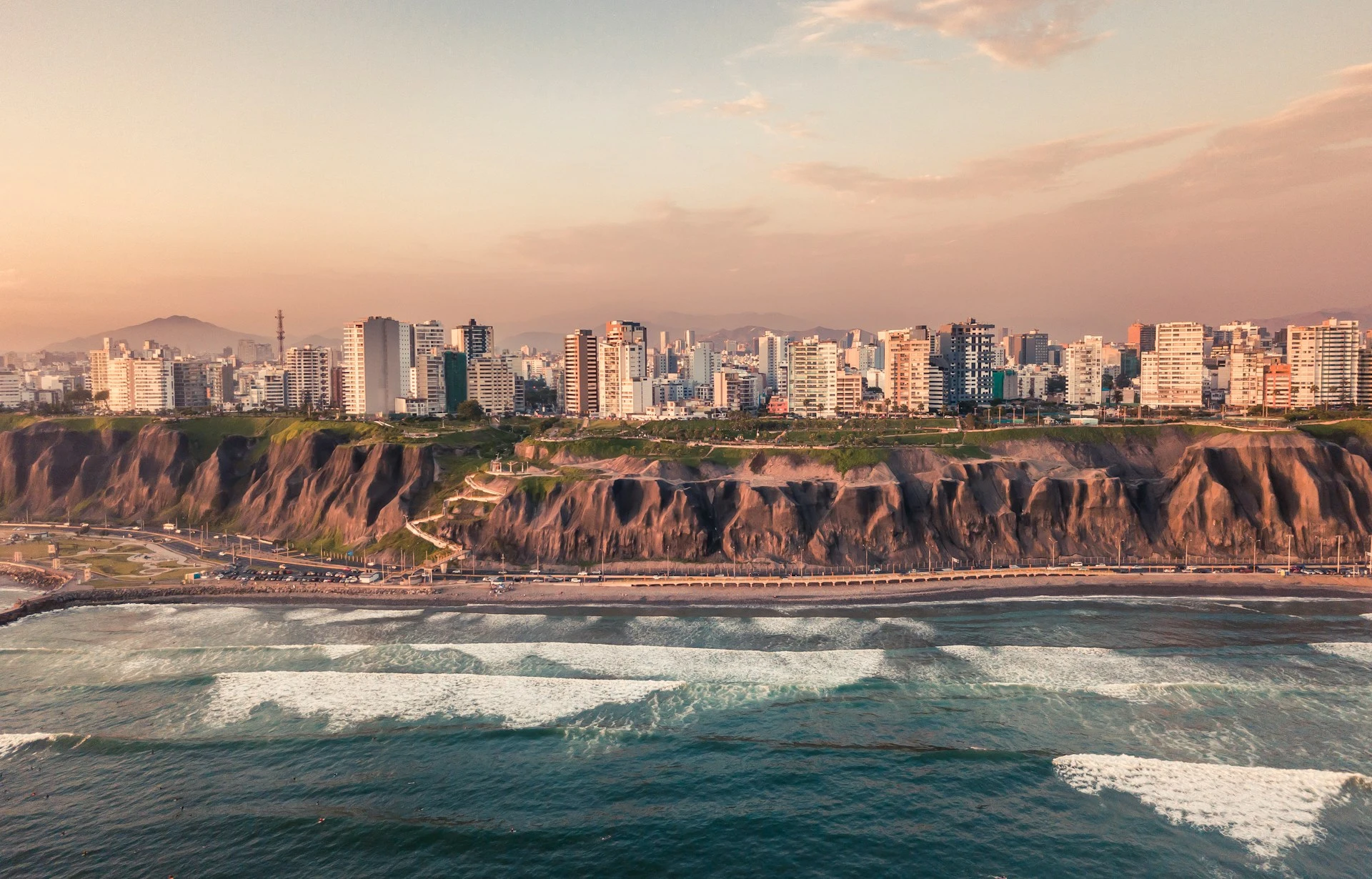Written by Jaden Parker
You may or may not have noticed, but your dear editor was away for a little while—10 days to be exact. I was away on a Playwright Retreat in Spoleto in Umbria, Italy. Of course, I couldn’t go without taking some notes and beautiful photos to share with you all! I’ll be uploading these in three separate parts, so stay tuned for the rest of my story! You can find part one here.
On the trip, I got to tour Spoleto and Assisi. The architecture in Italy is just so breathtaking; you can’t help but snap a photo every moment you get. We took a people mover all the way up to Piazza Compello, the highest piazza in Spoleto, then made our way down back to Piazza Garibaldi.


Rocca Albornoziana is the castle there. Originally the home for Pope Innocent VI’s Cardinal Albornoz to oversee all that he owned, it became a jail then a museum. It was built by Gattapone (Matteo di Giovannello) in the 1300s and still stands today!
The Ponte delle Torri bridge is a symbol of Spoleto. It has an aqueduct from Monteluco to Spoleto, giving Spoleto clean drinking water. The Mascherone fountain at the foot of the piazza there celebrates this! There are arches at the edge of each bridge, ten in total. St. Francis was known to have walked all over the grounds of the castle and the piazza.
Gian Carlo Menotti was the creator of the international festival of the arts there, Festival Dei Due Monde. The Great Jones company started coming there. People would cheer him when they saw him in the streets. When he passed away, he gave responsibility of the festival over to his “son” who was actually his lover he’d adopted. The man ran it into the ground, but luckily Giorgio Ferrara brought it back to life. It is now run by a woman, Monique Veaute.
We got to see one of Menotti’s properties . It has big doors that open to allow cars into the piazza. Ellen Stewart actually lived two doors down from him! Her name is still on the bell there, as her inheritors don’t quite know yet what to do with the property. Traveling down the piazzas, we passed by the Church of Santa Maria Assunta. At the end of the Spoleto Festival, a concert is performed in front of the church.

One of the piazzas we stopped at was Piazza Mercato, one of the busiest streets at night for young locals. Mercato means market, so this was the hotspot for all things souvenirs, food, and coffee. In the photos shown, those stones that are different from the rest of the alley are the original old stones! That shop you see is also the porchetta sandwich shop I mentioned. From there, we passed under arco del Druso, which is the oldest arch in Spoleto.

In Assisi, of course we got to tour the basilica, which is strictly a no-photo zone, though I did see some people trying to be sneaky. A person in a blue apron would approach them. È vietato fotografare. Non puoi fare foto qui, they’d kindly inform people. “No photography allowed. You can’t take photos here.” There were monks, nuns, and men in long African boubous, and tons of people speaking languages from all over the world. All of them came to pay their respects and touch St. Francis’ tomb located in the lower part of the church.
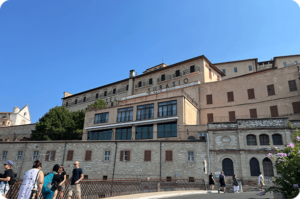

St. Francis of Assisi was born to a wealthy family. He served in the army; but after witnessing the devastations of death, he went to a church to pray. It is said that a crucifix in the chapel of San Damiano called to him and told him to give up his worldly possessions. So, he became a generator of peace and love and served Jesus. His father tried to give him the familial riches, but St. Francis refused it. He is known for talking with the animals and helping the sick. He had a girlfriend named Chiara. She had a group of followers named the “Poor Clares” and was also a saint. The crucifix was moved from San Damiano into the church of Santa Chiara.
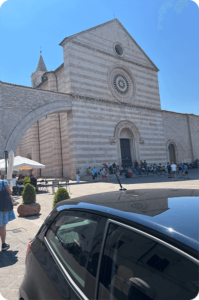
The Basilica of Saint Francis has beautiful frescoes and paintings throughout. It was hard to not just walk while staring at the ceilings! Most of the artwork done by various artists, including Giotto di Bondone, still stands, although the earthquakes of 1997 destroyed some of the paintings in the upper part. When viewing those sections—now that they are back open to the public and safe to see—it looks like just a thin layer of certain art has been removed. It was almost like someone had potato peeled a small bit off in random spots, whereas I’d expected giant chunks of the structure to be missing. Nevertheless, Francis would have hated the church due to how grandiose it is.

It was so astounding to see these structures that had survived centuries! Because America is such a young country in comparison to most, we don’t have any known structures from the B.C. era. Thus, when you get to touch a piece of history that existed well before your great grandparents were even brought into existence, it’s a remarkable feeling.
